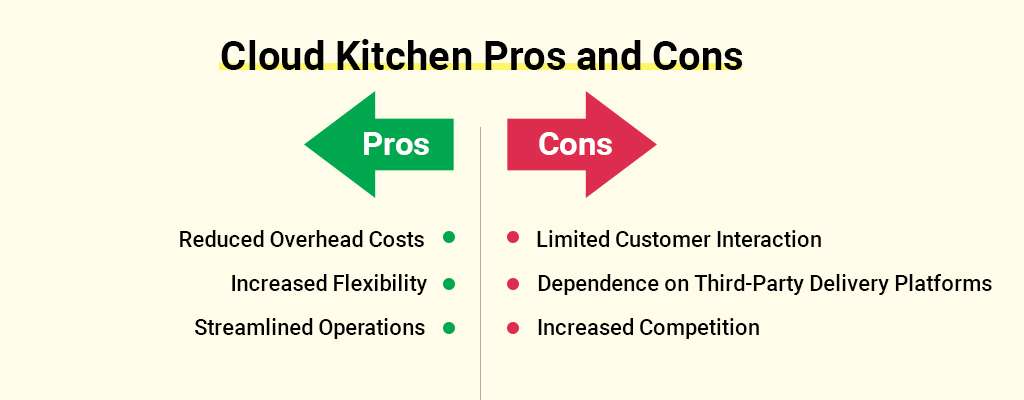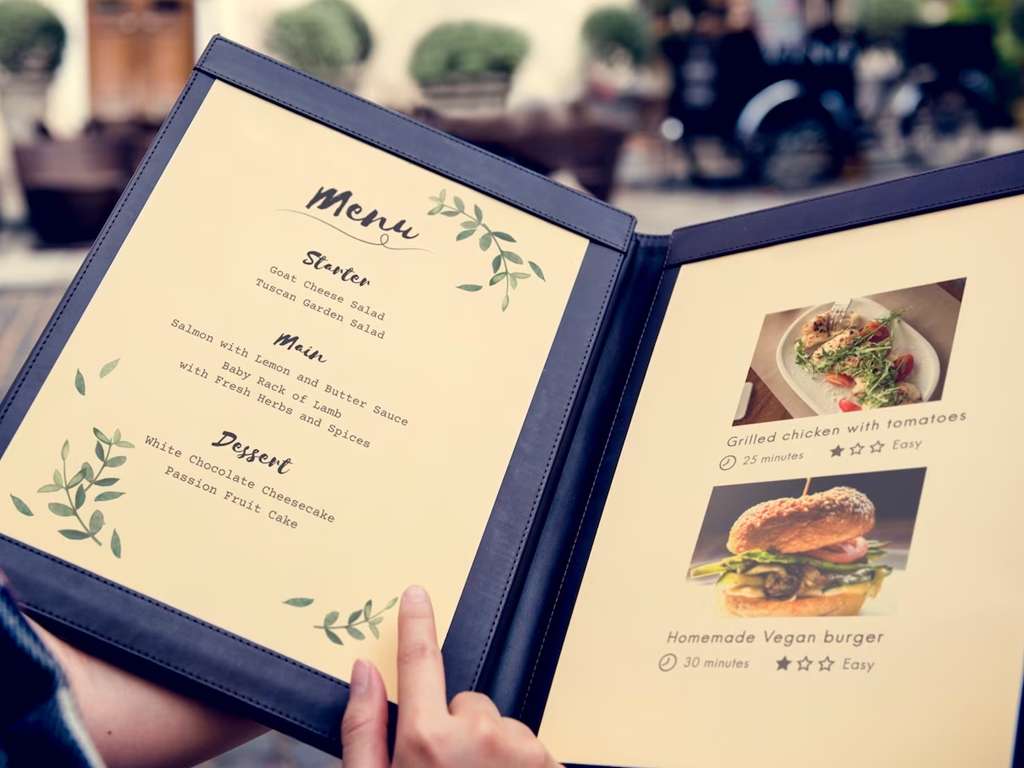In recent years, the concept of cloud kitchens has gained immense popularity, especially with the increasing demand for online food delivery. Also known as ghost kitchens or virtual kitchens, cloud kitchens are essentially delivery-only restaurants that operate from a single location. They allow food businesses to optimize their operations by reducing costs and increasing efficiency.
In this blog, we will discuss the top 10 key points you should know about cloud kitchens, including what they are, how they work, and why they are becoming increasingly popular in the food industry.
1. Cloud Kitchen?
These kitchens typically have no dine-in facilities or physical storefronts, and their entire business model revolves around fulfilling orders received through online food delivery platforms or direct ordering channels.
Cloud kitchens can offer a variety of cuisine options from different brands or menus operating out of the same location, making them an attractive option for restaurateurs looking to experiment with new concepts or expand their business without the overhead costs of traditional brick-and-mortar locations. The rise of cloud kitchens has been driven by the growing demand for delivery services, particularly in urban areas, and the potential cost savings and flexibility they offer compared to traditional restaurant models.
2. Pros of Cloud Kitchen
There are several benefits of cloud kitchens, but here are the top three:
- Reduced Overhead Costs: Since cloud kitchens do not require a physical storefront or dine-in facilities, they have significantly lower overhead costs compared to traditional restaurants. This can include lower rent, lower utilities bills, and lower staffing costs. As a result, cloud kitchens can operate on tighter profit margins and offer more affordable prices to customers.
- Increased Flexibility: Cloud kitchens allow for greater flexibility in terms of menu offerings and branding. Operators can test and launch new concepts and menus with minimal investment and can easily pivot to meet changing consumer demands. In addition, cloud kitchens can operate in smaller spaces and can be located in areas with high demand for delivery services, increasing their reach and customer base.
- Streamlined Operations: Cloud kitchens are designed for maximum efficiency and streamlined operations. Orders are received and fulfilled through online food delivery platforms or direct ordering channels, reducing the need for front-of-house staff and simplifying the order fulfillment process. This can result in faster order delivery times, higher order accuracy, and improved customer satisfaction.

3. Cons of Cloud Kitchen
While there are several benefits to cloud kitchens, there are also some potential disadvantages, including:
- Limited Customer Interaction: Since cloud kitchens are delivery-only restaurants with no dine-in facilities, they have limited opportunities for customer interaction. This can make it more difficult to establish customer loyalty and may require additional marketing efforts to attract and retain customers.
- Dependence on Third-Party Delivery Platforms: Most cloud kitchens rely on third-party food delivery platforms such as Uber Eats, Grubhub, or DoorDash to reach customers. While these platforms can help increase visibility and orders, they also charge fees and commissions that can significantly impact profitability. In addition, operators have limited control over the delivery experience, which can affect the quality of food and customer satisfaction.
- Increased Competition: The low overhead costs and flexibility of cloud kitchens have led to a surge in their popularity, resulting in increased competition in the delivery-only restaurant space. As a result, operators need to differentiate themselves and their menus to stand out from the competition and attract customers. This can require additional investment in branding, marketing, and menu development, and can make it more challenging for smaller operators to compete with larger, well-established cloud kitchen brands.

Top Ten Tips To Design Your Restaurant MENU!
4. How to set up a Cloud Kitchen?
Setting up a cloud kitchen involves several steps, including:
- Define your Concept: The first step is to define your concept and menu. Determine the type of cuisine you want to offer, and develop a menu that is appealing and scalable for a delivery-only model.
- Identify a Location:Next, identify a location that is suitable for a cloud kitchen. Look for a space that is affordable, easily accessible, and has adequate utilities and infrastructure for your kitchen setup. Consider the size of the space and whether it can accommodate multiple kitchen stations if you plan to operate multiple brands or menus from the same location.
- Obtain Permits and Licenses: Check with your local authorities to obtain the necessary permits and licenses to operate a food business. This can include a food service permit, health and safety permits, and business licenses.
- Set up your Kitchen: Set up your kitchen with the necessary equipment, such as ovens, stovetops, refrigerators, and food preparation areas. Consider investing in kitchen automation tools to streamline operations and increase efficiency.
- Develop Online Ordering and Delivery Channels: Partner with online food delivery platforms such as Uber Eats, DoorDash, or GrubHub to reach customers. Alternatively, develop your online ordering system and delivery fleet to control the customer experience and reduce third-party fees.
- Hire Staff: Hire kitchen staff and delivery drivers as needed. Consider the demand and volume of orders when determining staffing levels.
- Launch and Market your Business: Launch your cloud kitchen and market your business through social media, paid advertising, and other marketing channels. Focus on building brand awareness and providing a positive customer experience to build loyalty and repeat business.
These are just some of the essential steps to set up a cloud kitchen. The process may vary depending on your location and business needs, so it’s essential to do your research and seek expert advice if necessary.
5. What could be the expected cost of setting up a cloud kitchen in 2023?
Setting up a cloud kitchen can cost tens of thousands to hundreds of thousands of dollars, depending on location, size, equipment, and technology needs. For instance, a small kitchen may cost $50,000 to $100,000, while a larger one may require $200,000 or more. Other costs like rent, utilities, staff salaries, and marketing expenses must also be considered. It’s crucial to create a detailed business plan and conduct research to determine specific costs and seek expert advice if necessary.
6. Technology – Driven
Cloud kitchens are characterized by a technology-driven approach that relies on digital tools and platforms for various operational aspects, such as ordering, inventory management system and delivery tracking.
By utilizing technology, cloud kitchens can streamline their operations and improve efficiency, resulting in cost savings and better customer experience. Additionally, technology-driven systems enable cloud kitchens to gather and analyze data that can inform decision-making and improve business performance over time.

Is It Profitable to invest in a Restaurant Management System?
7. Who can benefit from the cloud kitchen business model?
The cloud kitchen business model is designed for food entrepreneurs and businesses who want to enter the food delivery market without the expense of operating a traditional restaurant. It can also benefit established restaurants looking to expand their delivery services without incurring additional overhead costs.
The model is ideal for those who want to leverage technology to streamline their operations and focus on delivery-only, rather than offering dine-in services. Additionally, the cloud kitchen business model can appeal to those who want to experiment with new food concepts or test a market before committing to a physical location.
8. Increasing Demand
The Cloud kitchen industry is poised for growth due to the increasing demand for food delivery services. Its technology-driven approach offers scalability, efficiency, and innovation opportunities for food businesses. As the market expands, cloud kitchens are likely to become more prevalent and essential in the food industry.
9. Location Flexibility
Cloud kitchens offer location flexibility as they do not require a physical dining space, unlike traditional restaurants. This enables them to be located in more affordable areas outside of high-traffic locations, allowing businesses to expand their reach and serve a wider customer base. By eliminating the need for a prime location, cloud kitchens can reduce overhead costs such as rent, making it easier for businesses to start and operate.
10. Conclusion
Cloud kitchens are a rapidly growing segment of the food industry that offer several advantages over traditional restaurants. From reduced overhead costs to location flexibility, and streamlined operations through technology, cloud kitchens provide food entrepreneurs and businesses with a viable alternative to the traditional brick-and-mortar restaurant model.





